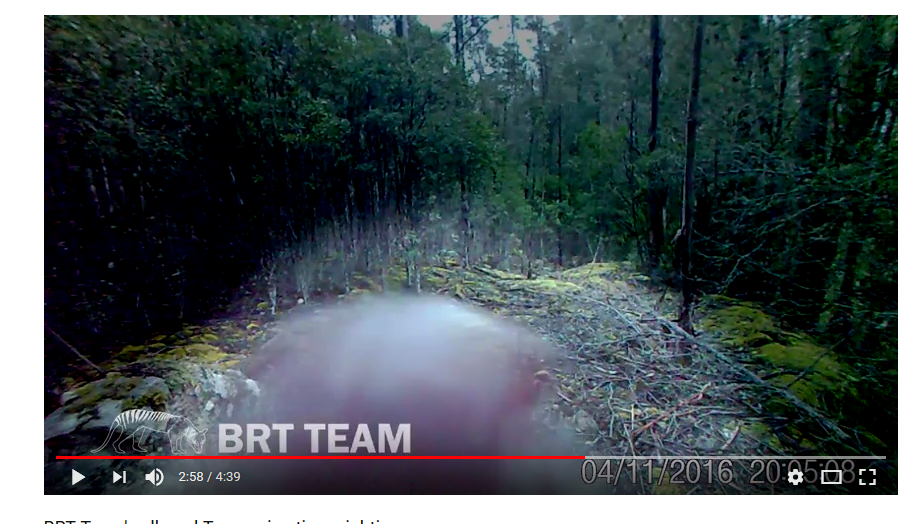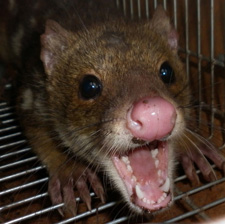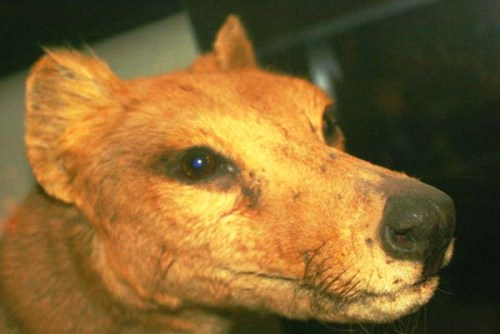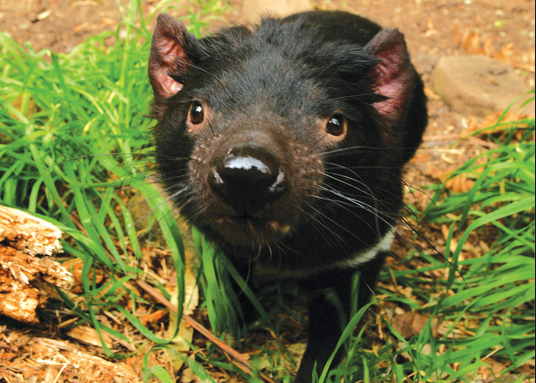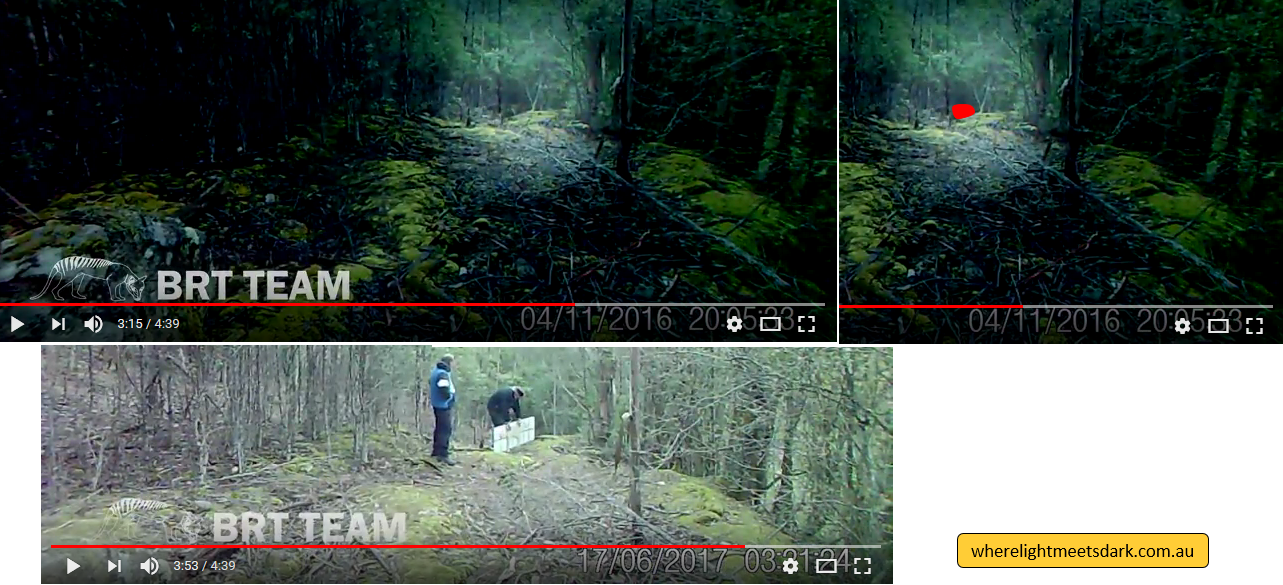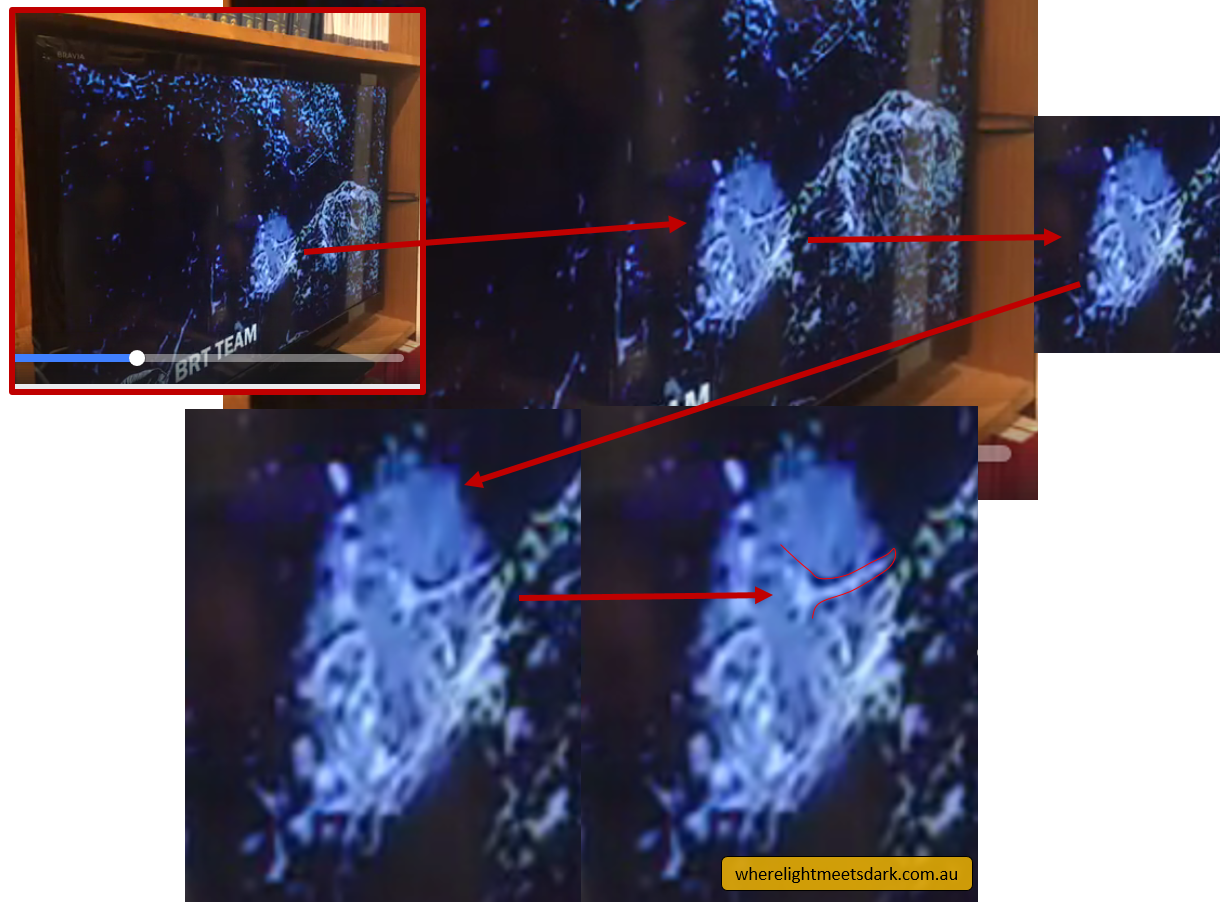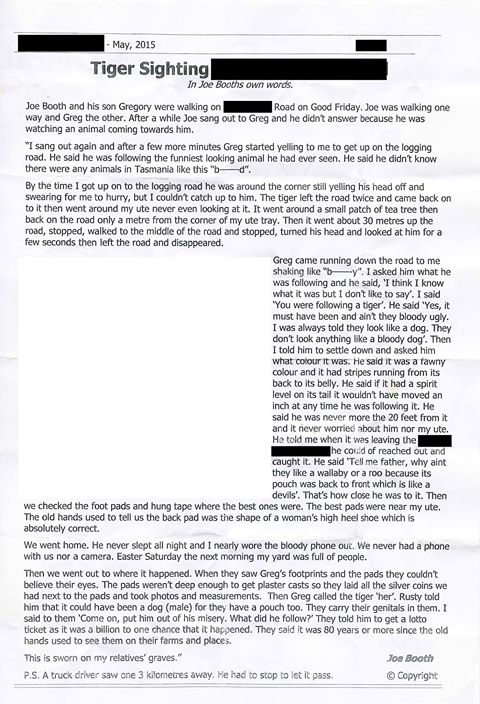Booth Richardson tiger team thylacines
Overview
On 6 September 2017, Greg Booth, Adrian Richardson and Greg's father George Booth held a press conference in Hobart, Tasmania, to present photographic and video evidence, captured by camera traps on varying dates, allegedly showing one or more living thylacines in Tasmania.
During the press conference the men explained that the first evidence was captured in November 2016. The camera's memory card was quickly entrusted with a lawyer to help preserve integrity of the evidence's provenance. Between then and now the men have continued to deploy additional cameras in the hope of securing additional evidence and the effort seems to have paid off, with several still photos and two video clips presented at the conference.
In early 2017 an unknown person made a call to radio station Triple M in Hobart and, with voice disguised, alleged that evidence had been captured via camera trap depicting the thylacine. The "Booth Richardson Tiger Team" (BRT Team) acknolwedged that that phone call relates to their evidence but they do not know who the caller was.
The evidence as presented
A series of photographs and video captures was presented as below.
A quick analysis
The majority opinion on Facebook, by those I would respect for their critiques, is that the animal in the 2 videos (ie. not considering the still frames, audio and eyewitness testimony for the moment) is most likely a spotted-tailed quoll, and I am inclined to agree.
Video clips
Video 1 - nose at camera
Video 1 shows a nose sniffing right up at the camera for just 3 or 4 frames. It is pink and very much like a spotted-tailed quoll (STQ). Thylacines and devils have black noses.
Photo: Nose sniffing at camera lens from below. Copyright: BRT Team.
Photo: Spotted-tailed quoll showing nose for comparison. Copyright: Debra Hobbs
Photo: Thylacine taxidermy from the Berlin Museum showing black nose (via johnknifton.com, uncredited).
Photo: Tasmanian devil showing black (or very dark brown) nose. Copyright AAT Kings.
Video 2 - animal in distance
Video 2 is timestamped just 30 seconds later, with an animal in the distance climbing onto a rise then disappearing over the rise. A clip showing a wallaby doing likewise in the same part of the frame helps give a sense of scale for the animal and the researchers manually move a paper cut-out tiger through that spot also. On its own the animal looks too small to be a thylacine but interestingly, when the cutout is moved into position, it gives credibility to the animal's size. That said, I question the rigour of this test: First, I'd like to see dimensions for the cutout; Second, I'd like those verified against expected size for thylacine; Third, I'd like to see a similar cutout for a large STQ; Fourth, the distance from camera makes a big difference to apparent size - even just a few feet nearer or further; Fifth, the angle of travel will affect apparent size.
Composite image showing still frame from Video 2 (top left, with overlay highlighting area of interest), red tracing of approximate size of animal in question (top right) and BRT team members holding a thylacine paper-cut out in place for size comparison (lower frame). Source images copyright: BRT Team. Composite: WLMD.
The animal in Video 2 holds its tail and walks in a manner such that I can see why people might believe it's a thylacine - but the reality is that spotted-tailed quolls also do this as can be seen here:
Still frames
Regarding the still frames - they are just far too pixelated to merit consideration. What I would like to see, in order to evaluate them, are the frames before and after and the timestamps of all shots. This would reveal whether foliage is moving and the extent that pixelation is affecting the appearance of the frames in other areas. In the video presented they've added an overlay to mask out most of the frame so as to draw focus to the area of interest. This masking has altered the appearance of the other areas of the frame. I would like to see the original, unedited images so I can zoom in on all parts of the image on my own. From this comparative analysis between frames I think we might be able to draw conclusions about where there may be an animal in frame and the nature of the shape of that animal.
The earliest media release presented video, captured by media, of the press conference. During this conference the BRT Team evidence was played back on a TV screen. From this sequence I have compiled an example below showing the area of interest highlighted by BRT, then expanded and traced for what I suspect is the animal in question.
Composite image showing enlargement of an area of interest in one photo captured by BRT Team. Source photo copyright: BRT Team. Composite: WLMD.
Audio files
Regarding the audio presented, on first hearing this is interesting and merits further investigation. At the start of this year I also captured audio of a mystery animal which, in all likelihood, is a sugar glider or an owl. However during that trip, and also four years prior, I heard another call (which has not been recorded) that better fits the description of thylacine. Having spent considerable time learning about the analysis of audio I plan to investigate the BRT Team audio recordings further.
Historical account
During the press conference the team members described earlier encounters with thylacines. In brief:
- Joe Booth recalled seeing a thylacine in the 1950s near Ellendale
- Greg Booth recalled his encounter in 2015 which led to the pair deploying the cameras that have captured the evidence presented here
An account of Greg Booth's 2015 sighting was published by Joe Booth at the time and is reproduced in part below.
May 2015 Tiger Sighting in Joe Booths own words. Joe Booth and his son Gregory were walking on ... Road on Good Friday. Joe was walking one way and Greg the other. After a while Joe sang out to Greg and he didn't answer because he was watching an animal coming towards him. "I sang out again and after a few more mintues Greg started yelling to me to get up on the logging road. He said he was following the funniest looking animal he had ever seen. He said he didn't know there were any animals in Tasmania like this "b_____d". By the time I got up on to the logging road he was around the corner still yelling his head off and swearing for me to hurry, but I couldn't catch up to him. The tiger left the road twice and came back on to it then went around my ute never even looking at it. It went around a small patch of tea tree then back on the road only a metre from the corner of my ute tray. Then it went about 30 metres up the road, stopped, walked to the middle of the road and stopped, turned his head and looked at him for a few seconds then left the road and disappeared. Greg came running down the road to me shaking like "b_____y". I asked him what he was following and he said, 'I think I know what it was but I don't like to say'. I said 'You were following a tiger'. He said 'Yes, it must have been and ain't they bloody ugly. I was always told they look like a dog. They don't look anything like a bloody dog'. Then I told him to settle down and asked him what colour it was. He said it was a fawny colour and it had stripes running from its back to its belly. He said if it had a spirit level on its tail it wouldn't have moved an inch at any time he was following it. He said he was never more than 20 feet from it and it never worried about him or my ute. He told me when it was leaving the ... he could of reached out and caught it. He said 'Tell me father, why aint they like a wallaby or a roo because its pouch was back to front which is like a devils'. That's how close he was to it. Then we checked the foot pads and hung tape where the best ones were. The best pads were near my ute. The old hands used to tell us the back pad was the shape of a woman's high heel shoe which is absolutely correct. We went home. He never slept all night and I nearly wore the bloody phone out. We never had a phone with us nor a camera. Easter Saturday the next morning my yard was full of people. Then we went out to where it happened. When they saw Greg's footprints and the pads they couldn't believe their eyes, The pads weren't deep enough to get plaster casts so they laid all the silver coins we had next to the pads and took photos and measurements. Then Greg called the tiger 'her'. Rusty told him that it could have been a dog (male) for they have a pouch too. They carry their genitals in them. I said to them 'Come on, put him out of his misery. What did he follow?' They told him to get a lotto ticket as it was a billion to one chance that it happened. They said it was 80 years or more since the old hands used to see them on their farms and places. This is sworn on my relatives' graves." Joe Booth PS. A truck driver saw one 3 kilometers away. He had to stop to let it pass. |
This is a very detailed account of a very close encounter over a period of time. I presume "Rusty" refers to Rusty Morley who is a former defence force tracker who has collected his own thylacine evidence in the same area over the years. One interesting note is that photographs were taken of the footprints found after this encounter. It would be excellent for these to be made available for examination also.
Ellendale hoax
Following the anonymous phone call to Triple M Hobart at the start of 2017 an anonymous person published still frames via a YouTube video alleging to have captured stills and video of a thylacine near Ellendale. The story given in that video mimicked many of the details in the Booth Richardson case but the "Ellendale thylacine" was quickly proven to be a hoax.
It merits stating that the Ellendale hoax is unrelated to Booth, Booth and Richardson's claims.
Conclusion and further research
As with many claims of thylacine sightings that have accompanying evidence, the Booth Richardson tiger team thylacines merit further investigation.
The BRT Team sighting is an excellent account with many avenues for investigation - the sighting testimony, the footprint photos following same, the videos, stills and audio captured between Nov 2015 and today.
Although the two video clips appear most likely to show a spotted-tailed quoll there is still value in making the analysis exhaustive following the suggestions given above for drawing comparisons with a spotted-tailed quoll cutout and providing measurements for the thylacine cutout used.
Likewise, the still frames merit further investigation - they are, after all, taken on completely different dates and in a different location to the video clips such that even if the video is proved to be within the relistic possibilities for a spotted-tailed quoll, the still frames stand on their own as evidence to be considered. Likewise for the audio.
It must be borne in mind that the efforts of these researchers come on the back of a first-hand encounter, described in detail - one which would clearly have given every opportunity to Greg Booth to have made a correct identification. Their research efforts are understandable and also lend their own weight to the eyewitness account. Presentation of the footprint photographs would be most helpful for other researchers to evaluate this encounter further.
Finally, the location of the BRT Team's encounters, despite being kept secret, is in the general area which is known for producing some of the last thylacines captured in the wild. It has a rich history of pre 1936 thylacine activity and no shortage of post 1936 thylacine sighting claims.
